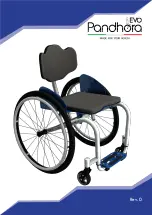
9
accessories.
3.1.2 There are a number of sources of relatively intense
electromagnetic fields in our everyday environment. Some of
these sources are obvious and easy to avoid. Others are not
apparent and exposure could be unavoidable. owever, we
believe that by following the warnings listed below, your risk to
EMI can be greatly minimized.
3.2 The sources of radiated EMI can be broadly classified into three
types
3.2.1 Hand-held portable transceivers (transmitter-receivers) with the
antenna mounted directly on the transmitting unit, such as
citizens band (CB) radios, walkie-talkies, security and fire or police
transceivers, cellular telephones and other personal
communication devices;
NOTE:
Some cellular telephones or similar devices transmit signals while they are ON, even
though they are not in use.
3.2.2 Medium-range mobile transceivers used in police cars, fire trucks,
ambulances and taxis usually having the antenna mounted on the
outside of the vehicle; and
3.2.3 Long-range transmitters and transceivers, such as commercial
broadcast transmitters (radio and TV broadcast antenna towers)
and amateur (HAM) radios.
NOTE:
Other types of hand-held devices (cordless phones, laptop computers, AM/FM
radios, TV sets, CD players, cassette players, and small appliances such as electric
shavers and hair dryers, et cetera) so far as we know, are not likely to cause EMI
problems.
Summary of Contents for KP-20 Series
Page 1: ...User manual KP 20 Series KP 20 2 KP 25 2...
Page 8: ...VII Declaration of conformity...
Page 9: ...VIII...
Page 10: ...IX...
Page 11: ...X...
Page 55: ...41 Figure 8 1 Figure 8 2 Figure 8 3 Figure 8 4...
















































